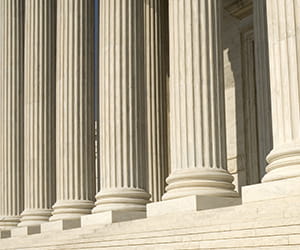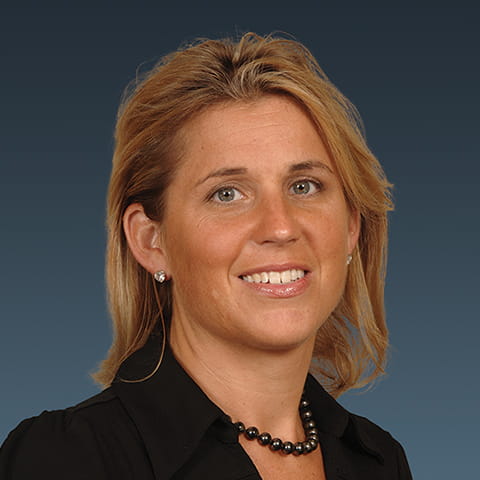HOSPITALITY: Considerations for restaurant and hotel Paycheck Protection Program loan recipients

The Paycheck Protection Program (PPP) Loan Forgiveness Application (the “Forgiveness Application”) revised June 16, 2020, finally provided some relief that the hospitality industry so desperately needed. To assist restaurant and hotel operators with navigating the ins and out of the PPP program, we have provided answers to some of the most frequently asked questions below.
1. What can PPP loan funds be spent on?
A: Funds obtained from a PPP loan can be spent on the following: eligible payroll costs, payments of interest on mortgage obligations on real or personal property incurred before Feb. 15, 2020 (but not any prepayment or payment of principal), rent payments on real or personal property leases dated before Feb. 15, 2020, and utility payments under service agreements dated before Feb. 15, 2020. (Note that for loan forgiveness, no more than 40% of the forgivable amount can be spent on non-payroll costs, up from the previous rule of no more than 25%. For more information, see our overview of the recently passed Paycheck Protection Program Flexibility Act.) Borrowers certify in the Borrower Application Form that “the funds will be used to retain workers and maintain payroll” or for one of the previously mentioned expenses.2. What is the time frame for using the loan funds in order to qualify for loan forgiveness?
A: Under previous legislation and a PPP Loans Frequently Asked Questions (PPP FAQ) issued by the Department of Treasury and Small Business Administration (SBA), the forgiveness amount for payroll costs depended on the borrower’s payroll costs over an eight-week “covered period” that begins on the date the lender makes the first disbursement of the borrower’s PPP loan.
The PPP Flexibility Act extended the covered period to the period beginning on the date the loan was disbursed and ending on the earlier of the date that is 24 weeks after loan origination or Dec. 31, 2020. (A borrower who received a loan before June 5, 2020, may choose to keep the original eight-week period rather than use the new 24-week one). “The lender must make the first disbursement of the loan no later than 10 calendar days from the date of loan approval,” the PPP FAQ says. (Read more from the FAQ in our running guide to PPP updates from the Treasury and SBA).
3. Should we use the accrual or cash method?
A: For payroll costs, the Forgiveness Application defines eligible payroll costs as payroll costs either paid or incurred during the Covered Period or Alternative Payroll Covered Period. The Covered Period is defined in the Forgiveness Application as the period beginning on the date the loan was disbursed and ending on the earlier of the date that is 24 weeks after loan origination or Dec. 31, 2020; the Alternative Payroll Covered Period is the 24-week period that begins on the first day of the borrower’s first pay period following their PPP Loan Disbursement Date and ends no later than Dec. 31, 2020. Again, borrowers that received their loan before June 5, 2020, may choose to instead use the original eight-week period.
Nonpayroll costs “must be paid during the Covered Period or incurred during the Covered Period and paid on or before the next regular billing date, even if the billing date is after the Covered Period.”
4. For forgiveness purposes, what is the maximum amount of payroll costs that can be used per employee?
A: A maximum of $46,154 of payroll costs per employee can be used during a 24-week period, or $15,385 for an eight-week period. Payroll costs include, but are not limited to, salaries, wages, commissions, tips, employee benefits (e.g., health care expenses, retirement contributions), and state taxes imposed on employee payroll paid by the employer (e.g., unemployment insurance premiums).5. What is the maximum amount of owner compensation replacement or owner-employee compensation?
A: Per a June 16, 2020, Interim Final Rule, owner compensation replacement forgiveness is limited to “eight weeks’ worth (8/52) of 2019 net profit (up to $15,385) for an 8-week covered period or 2.5 months’ worth (2.5/12) of 2019 net profit (up to $20,833) for a 24-week covered period.”
Per a May 22, 2020, Interim Final Rule, the above-mentioned limitation on the amount of loan forgiveness for owner-employees and self-employed individuals applies “per individual in total across all businesses.” This is also mentioned in a June 23, 2020, Interim Final Rule.
Per the June 23, 2020, Interim Final Rule, for C corporation owner-employees the capped amount includes the amount of their 2019 employee cash compensation and employer retirement and health insurance contributions made on their behalf; for S corporation owner-employees, their 2019 employee cash compensation and employer retirement contributions, but not employer health insurance contributions, which are already included in employee cash compensation; and for general partners, “the amount of their 2019 net earnings from self-employment (reduced by claimed section 179 expense deduction, unreimbursed partnership expenses, and depletion from oil and gas properties) multiplied by 0.9235.” General partners (and other self-employed individuals) already have retirement and health insurance contributions included in their net self-employment income and so cannot add them separately to their payroll calculation.
6. How should we manage the loan funds that we received?
A: A conservative approach would be to open a separate bank account, but that is not required. The entity should create a new program code in their chart of accounts to allow for accurate tracking of expenses.7. What compliance issues should I be concerned with?
A: Borrowers of a PPP loan are required to make certain “good-faith” representations to the lender and SBA regarding the need for and underlying calculations of PPP loan amounts. Upon completing the Forgiveness Application or lender equivalent, the borrower must make certain representations that the loan proceeds were utilized for qualified payroll and other covered costs of the loan program.
While all borrowers should maintain accurate and adequate records to support the payments made from loan proceeds, the SBA and Treasury established on May 13, 2020, a safe harbor under which any borrower, along with its affiliates, with a loan of less than $2 million “will be deemed to have made the required certification concerning the necessity of the loan request in good faith.”
In a May 22, 2020, Interim Final Rule, SBA clarified that any individual PPP loan could be reviewed at SBA’s discretion, and that “the borrower must retain PPP documentation in its files for six years after the date the loan is forgiven or repaid in full.” For added protection, consider an Agreed-Upon Procedures (AUP) engagement in which a team of independent accountants examines your documentation of expenses related to the PPP loan forgiveness to help ensure compliance and maximize the loan forgiveness amount.
8. How should a borrower calculate its number of full-time equivalent (FTE) employees?
A: For the purposes of the PPP loan forgiveness calculation, full-time equivalent employee means an employee who works 40 hours or more, on average, each week. Borrowers seeking forgiveness must document their average number of FTE employees during the Covered Period or the Alternative Payroll Covered Period and their Selected Reference Period (defined under 9 below).For purposes of this calculation, borrowers can use either a Standard or Simplified method.
Under the Standard method, a borrower should divide the average number of hours paid for each employee per week by 40 and round the total to the nearest tenth. (For example, the May 22, 2020, Interim Final Rule says, an employee paid for 30 hours per week on average during the Covered Period could be considered an FTE employee of 0.75, and one who was paid for ten hours per week on average during the Covered Period could be considered an FTE employee of 0.25.)
Under the Simplified method, borrowers may elect to treat all employees who worked 40 hours or more as one FTE and use a full-time equivalency of 0.5 for each part-time employee. For more information related to the PPP Loan Forgiveness calculation, watch our on-demand webinar.
9. What could trigger a reduction in loan forgiveness?
A: Section 1106 of the Coronavirus Aid, Relief, and Economic Security (CARES) Act, as amended by Section 3(b)(2) of the Flexibility Act, requires reducing a borrower’s PPP loan forgiveness amount as a result of a reduction in their number of FTE employees or a reduction in salary or wages.
9.1 A borrower’s FTE employees reduction
Unless exceptions or safe harbors apply, the amount of loan forgiveness will be reduced as a result of a reduction in the average weekly number of FTE employees during the Covered Period or the Alternative Payroll Covered Period compared to the Selected Reference Period. The Selected Reference Period, at the election of the borrower, could be either the period beginning on Feb. 15, 2019, and ending on June 30, 2019, or the period beginning on Jan. 1, 2020, and ending on Feb. 29, 2020. In the case of a seasonal employer, the Selected Reference Period is either of those two periods or a consecutive 12-week period between May 1, 2019, and Sept. 15, 2019.
9.2 A borrower’s reduction in employees’ salary or wages
A reduction of salary or hourly wages of employees during the Covered Period or the Alternative Payroll Covered Period compared to the period from Jan. 1, 2020, to March 31, 2020, in excess of 25% will result in a reduction of the loan forgiveness amount, unless an exception applies. This reduction applies for each new employee in 2020 and each existing employee who was not paid more than the annualized equivalent of $100,000 in any pay period in 2019. The May 22, 2020, Interim Final Rule clarified that the reduction calculation is performed on a per-employee basis, not in the aggregate.
10. How can I eliminate reductions in loan forgiveness?
A: There are a number of safe harbors and exceptions that will eliminate the reductions in loan forgiveness.
10.1 Salary/Hourly Wage Reduction Safe Harbor
This safe harbor, included in the Forgiveness Application, is met if a borrower restores annual average salary or hourly wages by the earlier of Dec. 31, 2020, or the date the loan application is submitted. For this calculation, the average salary or hourly wage is compared to the Feb. 15, 2020 salary/hourly wage levels.
10.2 FTE Reduction Safe Harbors
As per the instructions to the Forgiveness Application, two separate safe harbors provide an exemption from any loan forgiveness reduction related to a decrease in FTE employee levels:
10.2.1 Reduced Business Activity FTE Safe Harbor
The borrower, in good faith, must be able to document that it was unable to operate between Feb. 15, 2020, and the end of the Covered Period at the same level of business activity as before Feb. 15, 2020. The reason for this should be directly or indirectly due to compliance with requirements established or guidance issued between March 1, 2020, and Dec. 31, 2020, by the Secretary of Health and Human Services, the Director of the Centers for Disease Control and Prevention, or the Occupational Safety and Health Administration, related to worker or customer safety requirements related to COVID-19.
In order to substantiate this inability to operate at full capacity, as part of the supporting documentation, the borrower must include copies of applicable COVID-19-related requirements or guidance for each business location and relevant borrower financial records.
10.2.2 FTE Employee Levels Restoration Safe Harbor
The following conditions must be met by the borrower: “(a) the borrower reduced its FTE employee levels in the period beginning Feb. 15, 2020, and ending April 26, 2020; and (b) the Borrower then restored its FTE employee levels by not later than Dec. 31, 2020, to its FTE employee levels in the borrower’s pay period that included Feb. 15, 2020.”
10.3 FTE Reduction Exceptions
The Forgiveness Application also includes three FTE Reduction exceptions.
10.3.1 “The borrower made a good-faith, written offer to rehire an individual who was an employee on Feb. 15, 2020, and the Borrower was unable to hire similarly qualified employees for unfilled positions on or before Dec. 31, 2020.”
10.3.2 “The borrower made a good-faith, written offer to restore any reduction in hours, at the same salary or wages, during the Covered Period or the Alternative Covered Period and the employee rejected the offer.”
10.3.3 “Any employees who during the Covered Period or the Alternative Payroll Covered Period (a) were fired for cause, (b) voluntarily resigned, or (c) voluntarily requested and received a reduction of their hours.”
In each of these cases, if the position/hours have not been filled by a new employee, the guidance provided allows the borrower to count this former employee/employee’s hours toward the FTE calculation at the same level as before the reduction.
The documents that borrowers should maintain include, but are not limited to, the written offer to rehire the individual, a written record of the offer’s rejection, and a written record of efforts to hire a similarly qualified individual. Borrowers are required to inform the applicable state unemployment insurance office of any employee’s rejected rehire offer within 30 days of the rejection.
A borrower should also document terminations for a cause or voluntary resignations, as well as maintain records of written requests by employees for reductions in work schedules and refusals to accept restoration of reductions in hours.
11. If eligible, how do I apply for PPP loan forgiveness?
The borrower should complete and submit to its lender either the Forgiveness Application (SBA Form 3508), an alternative Loan Forgiveness Application (SBA Form 3508EZ), or a lender equivalent.
Form 3508EZ is available to borrowers if one of three criteria listed in the instructions to the Form 3508EZ is met:
11.1 The borrower is a self-employed individual or sole proprietor who has no employees when the PPP loan forgiveness application is submitted and did not include any employee salaries as part of the average monthly payroll included in the Borrower Application Form when applying for the PPP loan; OR
11.2 The borrower did not reduce annual salary or hourly wages of any employee by more than 25 percent during the Covered Period or the Alternative Payroll Covered Period; AND the borrower did not reduce the number of employees or the average paid hours of employees between Jan. 1, 2020 and the end of the Covered Period (for this purpose, FTE reductions related to inability to rehire as described under 10.2 above should be ignored); OR
11.3 The borrower did not reduce annual salary or hourly wages of any employee by more than 25 percent during the Covered Period or the Alternative Payroll Covered Period; AND the borrower was unable to operate during the Covered Period at the same level of business activity as before Feb. 15, 2020, as described under 10.1 above.
For the purposes of evaluating eligibility criteria for the Form 3508EZ:
a) employees are individuals whose wages or salary on an annualized basis during any single period in 2019 did not exceed $100,000, and
b) salaries during the Covered Period or the Alternative Payroll Covered Period are compared to salaries during the period between Jan. 1, 2020 and March 31, 2020.
If a borrower does not meet at least one of the above-mentioned Form 3508EZ requirements, the borrower must use the longer Form 3508.
12. When should I apply for forgiveness?
A: A borrower should apply for forgiveness of the PPP loan within 10 months after the last day of the applicable Covered Period.13. When should I start making payments on the PPP loan, if my loan is not forgiven?
A: The deferral period for payments of principal, interest, and fees on PPP loans ends on the date when the approved forgiveness amount is remitted to the lender by SBA. If the borrower applies for forgiveness within 10 months after the last day of the Covered Period, the lender has 60 days from receipt of a complete application to review it and issue a decision to the SBA. SBA then has 90 days to approve the forgiveness amount and remit the payment to the lender.
A borrower can defer any payments on PPP loans for up to a maximum of 15 months from the last day of the elected Covered Period. If a 24-week Covered Period is elected by the borrower, the deferral of the PPP loan payments could be potentially over 20 months from the date the loan is disbursed.
If the borrower does not apply for forgiveness of a loan within 10 months after the last day of the Covered Period, the PPP loan is no longer deferred and the borrower must begin paying principal and interest.
14. What is the maturity of the PPP loan?
A: All PPP loans made on or after June 5, 2020 (the enactment of the Flexibility Act), have a five-year minimum maturity. By mutual agreement, lenders and borrowers can extend the maturity date.
If your PPP loan was issued before June 5, 2020, you should reach out to your lender to discuss extension of the maturity date from the original term of two years to five years.
15. The 1% interest rate on PPP loans is assumed to be below market rate. Do we need to impute interest?
A: No, in accordance with ASC 835-30-15-3(e), a transaction between the borrower and a government agency does not require the borrower to impute interest.16. The SBA is now taking new applications for the Economic Injury Disaster Loan (EIDL) and EIDL Advance application for all eligible small businesses. How do I go about applying for one of these loans, and do I qualify if I’ve already received a PPP loan?
A: On June 15, SBA resumed accepting new Economic Injury Disaster Loan (EIDL) and EIDL Advance applications from qualified small businesses. According to SBA, applicants who have already submitted their applications will continue to be processed on a first-come, first-served basis.
The maximum EIDL amount has been reduced by SBA from $2 million to $150,000. EIDL’s interest rate is 3.75% for small businesses, and its maturity is up to 30 years.
The loan is made by the SBA directly, and a maximum $10,000 advance ($1,000 per employee) on the loan can be requested as well. This loan advance will not have to be repaid and will reduce the forgiveness amount of the PPP loan.
Borrowers who received PPP loans are eligible to apply for an EIDL as long as the funds are not used for the same purpose.
For more information about the Paycheck Protection Program, or updates to the Economic Injury Disaster Loan (EIDL) program, visit our Coronavirus Resource Center for articles, on-demand webinars, and more.
Reach out to one of our PPP loan forgiveness specialists, below, for information on our customized assistance with PPP loan forgiveness consulting and support, as well as agreed-upon procedures (AUP) engagements.
Contact
Yelena Belaks, CPA, Partner, Tax
646.254.7486
Stephanie O’Rourk, CPA, Partner, Hospitality
404.250.4079
Contact
Let’s start a conversation about your company’s strategic goals and vision for the future.
Please fill all required fields*
Please verify your information and check to see if all require fields have been filled in.

Coronavirus Resource Center

On-Demand Webinar: PPP revised loan forgiveness application released
Related services
Any advice contained in this communication, including attachments and enclosures, is not intended as a thorough, in-depth analysis of specific issues. Nor is it sufficient to avoid tax-related penalties. This has been prepared for information purposes and general guidance only and does not constitute legal or professional advice. You should not act upon the information contained in this publication without obtaining specific professional advice specific to, among other things, your individual facts, circumstances and jurisdiction. No representation or warranty (express or implied) is made as to the accuracy or completeness of the information contained in this publication, and CohnReznick, its partners, employees and agents accept no liability, and disclaim all responsibility, for the consequences of you or anyone else acting, or refraining to act, in reliance on the information contained in this publication or for any decision based on it.
















